That Useful Wine Site
Search, or just roll your cursor over the colored boxes farther below.click the “x” to dismiss Search-results block.
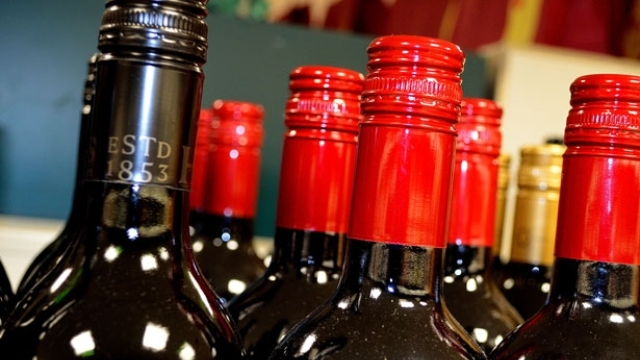
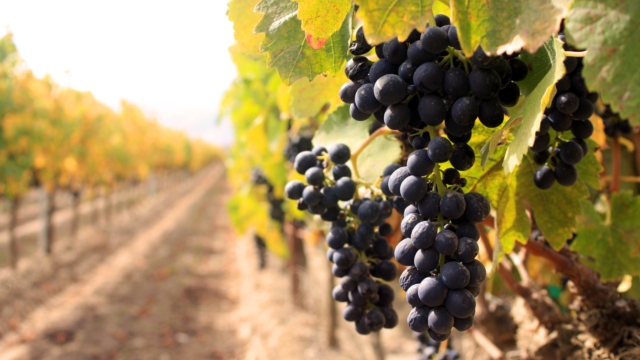
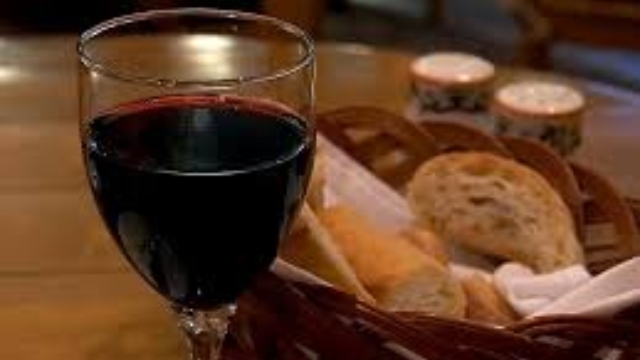
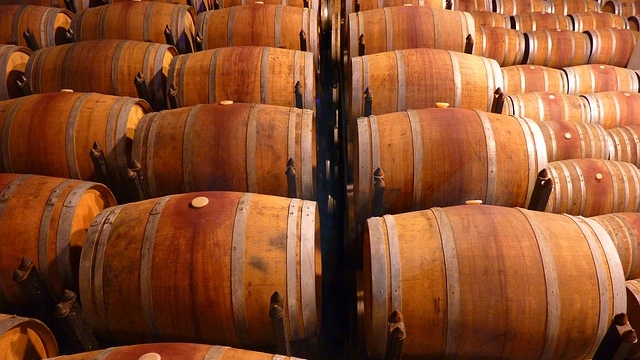
Advertisement:
Advertisement:
Quick page jumps:
(Synonyms: Bidure, Bordeaux, Bordo, Bouchet, Bouchet Sauvignon, Burdeos Tinto, Cabernet Petit, Carbonet, Carbouet, Carmenet, Lafit, Lafite, Marchoupet, Navarre, Petit Bouchet, Petit Cabernet, Petit Cavernet Sauvignon, Sauvignon, Sauvignonne, Vidure, Vidure Sauvignonne, Petit Vidure)
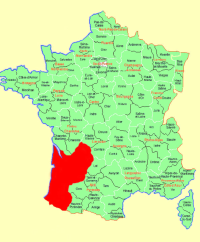
Cabernet Sauvignon is a red-wine grape originating in Bordeaux, but now grown globally. It is widely considered one of the dozen and a half or so “Noble wine grapes” of the world; indeed, it is one of the three red-wine graps included when the lesit was only a half-dozen long. It is the informing grape of the classic Bordeaux blends (known in the U.K. as “claret”), and is the second-most planted wine grape in the world (surpassed only recently by another Bordeaux red, Merlot).
Americans are used to wines that are bottled and marketed by varietal name (which now requires that the wine must be at least 75% of the named type); but in most of Europe, the tradition has been to produce named blends, with laws specifying—usually quite tightly—what percentages of what grapes may be used. The principal Bordeaux grapes are Cabernet Sauvignon, Merlot, and Cabernet Franc, though there are others. Cabernet Sauvignon is an assertive grape, and thus an excellent candidate for blending, not only in the traditional Bordeaux blends, but with many other important reds from round the world.
Cabernet Sauvignon wine is hard to describe, chiefly because the grape lends itself to many fairly different styles of vinification. Typically, it has distinct fruit (usually bramble fruits are mentioned, especially black currant) but with overlays variously described as “earthy”, “leathery”, or “woody”, and normally it is relatively heavy on tannins. It is a robust and, as noted, quite “assertive” taste. At times, it can also exhibit bell-pepper or green-olive tastes, sometimes to the extent of those becoming defects (the notorious “vegetal” Cabernets).
Cabernet Sauvignon is widely held to have a strong affinity for oak, and is usually aged in new oak barrels. While oak aging is common for many wines, some winemakers feel the trend has gone too far, with the oak taste overwhelming the actual wine taste (hence August Sebastiani’s now-famous remark “If you like the taste of wood, go bite a tree,” sometimes also recounted as “go eat some toothpicks”). The extent of oak use in the winemaking is one of the chief factors distinguishing one cab from another.
While Bordeaux red blends remain the most widely respected use of Cabernet Sauvignon, today many other regions are also producing excellent cabs (and blends), from California and Washington to Chile and Australia. It is, in the U.S., most people’s “go-to” red, at levels from the famous “Two-Buck Chuck” to three-digit per-bottle prices. Indeed, one criticism of the present world wine market is that a very few immensely popular varieties—notably Cabernet Sauvignon—are causing growers to rip out excellent traditional grape types, some of which are at risk of disappearing altogether, in favor of the highly saleable cab.
Besides the inventiveness of the winemaker, another big influence on Cabernet Sauvignon wines is the climate where the grapes were grown (true of all wines, but more so with cab). One reason blends became so popular in the Old World is that in many grape-growing areas the weather is highly variable, and in many seasons the grapes must be picked before their ideal time; thus, other, earlier-ripening types need to be blended in to make wine of the desired quality—to make up the “holes” in the cab. In the New World, where climates are typically much warmer, Cabernet Sauvignon regularly achieves full ripeness, though where the season is long enough but relatively cool, the infamous “bell pepper” quality can dominate the wine (Monterey County in California use to have that problem, now long since resolved by better clonal selection and growing techniques).
Another element that affects all wines but Cabernet seemingly more than most is soil. The type is especially good, if vinified with care, at expressing terroir (a taste clearly representative of its region of growth).
And because Cabernet Sauvignon is naturally high in tannins, it makes wines that famously can improve with bottle aging for decades. Modern styling, however, has tended toward more immediately accessible wines, because few wine drinkers nowadays have the interest in or capability for aging wines for very long periods (or, often, at all—studies show that a very high percentage of wines sold in the U.S. are drunk on the day of purchase).
Factoid: Cabernet Sauvignon is a relatively recent (17th century) cross between Cabernet Franc and the white Bordeaux grape Sauvignon Blanc.
There is a plethora of decent Cabs out there at $20 or under, the majority from South America; the list below is almost (but not quite) a random selection of five from twice as many candidates.
• This wine’s Wine Searcher “Reviews” page.
CellarTracker has three separate listings for this wine:
• This wine’s CellarTracker review pages.
• This wine’s CellarTracker review pages.
• This wine’s CellarTracker review pages.
• Retail offers of this wine listed by Wine Searcher.
• Retail offers of this wine listed by 1000 Corks.
• This wine’s Wine Searcher “Reviews” page.
• This wine’s CellarTracker review pages.
• Retail offers of this wine listed by Wine Searcher.
• Retail offers of this wine listed by 1000 Corks.
• This wine’s Wine Searcher “Reviews” page.
• This wine’s CellarTracker review pages.
• Retail offers of this wine listed by Wine Searcher.
• Retail offers of this wine listed by 1000 Corks.
• This wine’s Wine Searcher “Reviews” page.
• This wine’s CellarTracker review pages.
• Retail offers of this wine listed by Wine Searcher.
• Retail offers of this wine listed by 1000 Corks.
• This wine’s Wine Searcher “Reviews” page.
• This wine’s CellarTracker review pages.
• Retail offers of this wine listed by Wine Searcher.
• Retail offers of this wine listed by 1000 Corks.
Curiously, we had trouble finding a good “splurge” choice. The problem is not any scarcity of excellent Cabs: it is that virtually all the Cabs nontrivially better than those listed above are into the three-digit price range, usually by quite a bit (since this is a prestige varietal). Fortunately there was one standout as to quality, price, and availability.
Our nomination is the Booker Vineyards “My Favorite Neighbor” Cabernet Sauvignon, which goes for $36 up to a wild $189 (but most offers are much closer to the lower than the upper bound).
• This wine’s Wine Searcher “Reviews” page.
• This wine’s CellarTracker review pages.
• Retail offers of this wine listed by Wine Searcher.
• Retail offers of this wine listed by 1000 Corks.
(Booker also has a “Harvey & Harriet” version of their “My Favorite Neighbor” that is almost as good and a few dollars less expensive.)
Advertisement:
Advertisement:
|
|
This site is one of The Owlcroft Company family of web sites. Please click on the link (or the owl) to see a menu of our other diverse user-friendly, helpful sites. |
|
| (Note: All Owlcroft systems run on Ubuntu Linux and we heartily recommend it to everyone—click on the link for more information). | ||
|
All content copyright © 2024 The Owlcroft Company
(excepting quoted material, which is believed to be Fair Use). |
This web page is strictly compliant with the W3C (World Wide Web Consortium) Extensible HyperText Markup Language (XHTML) Protocol v1.0 (Transitional) and the W3C Cascading Style Sheets (CSS) Protocol v3 — because we care about interoperability. Click on the logos below to test us!
This page was last modified on Saturday, 30 October 2021, at 11:26 pm Pacific Time.
Some Descriptions of Cabernet Sauvignon Wines
“When Cabernet Sauvignon is young, the wines typically exhibit strong fruit flavors of black cherries and plum. The aroma of black currants is one of the most distinctive and characteristic element of Cabernet Sauvignon that is present in virtually every style of the wine across the globe. Styles from various regions and producers may also have aromas of eucalyptus, mint and tobacco. As the wines age they can sometimes develop aromas associated with cedar, cigar boxes and pencil shavings. In general New World examples have more pronounced fruity notes while Old World wines can be more austere with heightened earthy notes.”
“Cabernet’s noblest hallmarks: exceptionally deep colour that is bluish purple when young (thanks to the grapes’ thick skins); in young wines a particularly high level of tannins, the preservative that dries out the insides of our cheeks (due to the same phenomenon) and therefore an almost unequalled capacity to age in bottle; and a special affinity for oak, the vibrant signature cassis/blackcurrant fruit melding particularly well with the cedarwood and cigarbox aromas of new, top-quality French oak.”
“Typical taste in varietal wine: full-bodied, but firm and gripping when young. With age, polyphenols polymerize: the grip fades away. The rich currant qualities of the Cabernet Sauvignon wine change to that of pencil box. Bell pepper notes remain. . . . Vanilla notes if present come not from the fruit but from the oak treatment. They increase review ratings but may overwhelm the varietal taste. ”
“[Yields] dark, intensely flavored, tannic, long-lived wines that often require years of aging to soften and become drinkable. Like chardonnay, the grape can be grown in a multitude of different growing regions and conditions (although it prefers warmer climates) and yet reliably impart characteristic varietal aromas and flavors, which most often are compared to black currant, cherry, bell pepper and green olive.”
“Cabernet Sauvignon has a bit more backbone and tannic strength than Merlot. Cabernet Sauvignon is admired for its intensity and classic flavors of currant, plum and spice, and it can also have distinguishing herb, olive, tobacco, cedar and anise notes, among others.”
“Since Cabernet Sauvignon is grown in a wide range of climates and regions throughout the world it has varied flavors. Fundamentally speaking, Cab is a full-bodied red wine with dark fruit flavors and savory tastes from black pepper to bell pepper.”
“Typically, Cabernet Sauvignon wines smell like black currants with a degree of bell pepper or weediness, varying in intensity with climatic conditions, viticulture practices, and vinification techniques. Climates and vintages that are either too cool or too warm, rich soils, too little sun exposure, premature harvesting, and extended maceration are factors that may lead to more vegetative, less fruity character in the resulting wine. In the mouth, Cabernet can have liveliness and even a degree of richness, yet usually finishes with firm astringency.”
“[F]lavor profile: blackcurrant, blackberry, black pepper, cedar, green bell pepper (cool climate), and vanilla from oak. Full body with high tannins.”